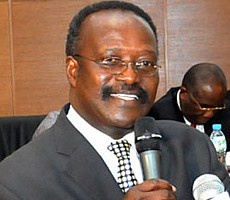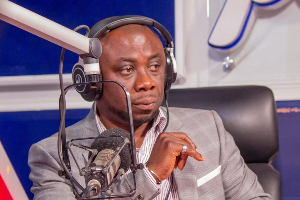The Ministry of Food and Agriculture (MoFA) has confirmed the smuggling of subsidised fertiliser across the northern border into Burkina Faso, but says regional and district security councils have deployed personnel to the border- posts to check the practice.
Director at the Directorate of Crop Services at the Ministry, Emmanuel Asante-Krobea, told the B&FT that he had personally visited smuggling points in the north, particularly Bawku, and confirmed that fertiliser from Ghana, which is sold at subsidised rates to farmers under the government’s Fertiliser Subsidy Programme (FSP), is being smuggled into Burkina Faso where the commodity is relatively more expensive.
“Together with the secretariat and the national coordinator (of the FSP), we went to the areas concerned to see the problem at first-hand three weeks ago.
We interacted with the regional and district administrations as well as the heads of the security agencies, and we all agreed that there is smuggling of the commodity,” he said.
“We [MoFA] don’t possess the skills to combat smuggling; therefore the onus is on the regional and district security councils to devise strategies to curb the incidence.
During my monitoring, I was reliably informed that the security councils have detailed personnel to man the border-posts at all entry points.”
The government is subsidising 176,000 tonnes of fertilizer for non-cocoa crops in the 2012/13 planting season at a cost of GH?120.3million, up by more than 50% from last season due to rising costs. The subsidy, which covers crops including cotton, rice and maize, cuts the price farmers pay per bag by more than 40%.
But the lower price has encouraged smuggling of the commodity through the northern border points, with little evidence of its occurrence in the south, Mr. Asante-Krobea said.
On farmers’ complaints about the late delivery of fertiliser to them under the programme, he said the late payment of last year’s subsidies to fertiliser importers and distributors delayed deliveries for the current season.
“The programme is backed by funds, and if the funds are not made available it cannot be operationalised. The Ministry does not control the funds, so we have brought the problem of delay in the release of fertiliser to the attention of the government. We hope the situation will improve.”
Under the programme, companies import, distribute and sell the fertilisers, and MoFA uses a tracking system to determine how much fertiliser has been bought before the subsidies are paid to the companies.
The subsidies have helped to raise Ghana’s output of staple crops and bolstered agriculture, but a sharp slowdown in the sector’s growth in 2011 to less than 1% from 5.3% in 2010 has raised new questions about the adequacy of the scope and scale of government’s interventions.
Ghana has one of the lowest fertiliser application rates per hectare in Africa, and the subsidies -- in the four years since the programme began -- have boosted the rate of application from 8kg/hectare to 10kg/hectare.
The target is to increase fertiliser application to 20kg/hectare in line with the Abuja Declaration on fertiliser use under the African Green Revolution agenda.
Backed by investments from India, the government plans to establish a fertiliser manufacturing plant at Shama in the Western Region, to be powered by gas from Ghana’s oil fields.
Negotiations for funding from the Indian Export and Import Bank have begun, according to Kwesi Ahwoi, Minister for Food and Agriculture.
Business News of Friday, 7 September 2012
Source: thebftonline
Fertiliser subsidy fuels smuggling

















